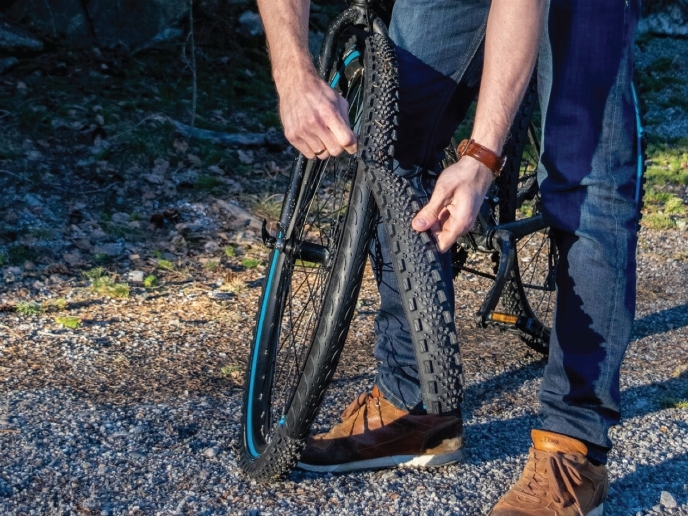On your bike – zip-on tyre surfaces provide simple, safe cycling all year round
The project, called reinventing the tyre, used integrated zip-on technology to enable the tread of bicycle tyres to be changed in seconds to match riding conditions. “We created reTyre, a patented fully functional, user-friendly and industrially and economically viable modular tyre system,” says Paul Amundsen, project coordinator and CEO of Norwegian SME Technium AS. The idea came to Amundsen at university, when he realised that almost none of the bicycles on campus were fitted with the appropriate studded tyres for cycling in winter. “I saw that riders, myself included, couldn’t be bothered with all the work involved in changing tyres, despite the icy roads. I wanted people to be safe cycling all year round by making it easier to adapt to the road conditions. But the solution needed to be affordable, easy to apply and scalable to manufacture,” he explains.
Continual improvement
However, Amundsen observes, creating a functional modular system for tyres is surprisingly complex and challenging: “We needed to overcome limitations in the current state-of-the-art tyre manufacturing processes and materials, which involved constant improvements based on market feedback and user experience. No lab in the world can replicate the conditions, wear, and use cases a tyre – and especially a modular system – will meet in real life.” The EU project provided an incredible opportunity to move R&D out of the lab, and effectively fast-forwarded the development process by years. “During the project, countless improvement cycles have been implemented and verified, resulting in high-performing products. At the same time, production methods have been developed and refined – directly improving product quality and industrial feasibility,” notes Amundsen. Today, reTyre is selling the third generation of their products. This includes perfected zip-on technology with one-of-a-kind stainless steel zippers, new technology for ultra-thin and durable ‘skins’ (tyre surfaces), and improved rubber compounds that have gone through extensive user testing under different harsh environments.
New possibilities
According to Amundsen, the ultimate goal of reinventing the tyre is to make it easier and safer to cycle all year round and encourage more people to use the bicycle as a means of transportation. “The benefit is shared between the end-user and society, as cycling creates a greener, more sustainable urban environment and a healthier population,” he adds. Furthermore, because modularity separates the pneumatic tyre (base) and riding surface (tread), it also creates opportunities for the use of novel materials and automated production methods – to the benefit of both European manufacturing and the environment. “We are closing in on a recyclable system that will greatly reduce the carbon footprint of tyres,” explains Amundsen. Researchers receive plenty of feedback on what type of ‘skins’ they should develop next when demonstrating the modular system at exhibitions and trade shows. “Our products spark creativity and enthusiasm among people; seeing their minds open up to the fact that tyres can be anything – and do everything – is a great motivator and keeps us busy in the R&D department. ReTyre is ‘shoes’ for the bicycle, the wheelchair, the motorcycle, the pram and many other vehicles – and I believe many industries can contribute with materials, knowledge, methods and solutions to build upon the concept of modularity,” Amundsen concludes.
Keywords
reinventing the tyre, tyre, zip, bicycle, cycling, modular, skin






